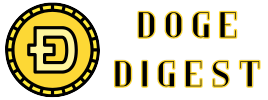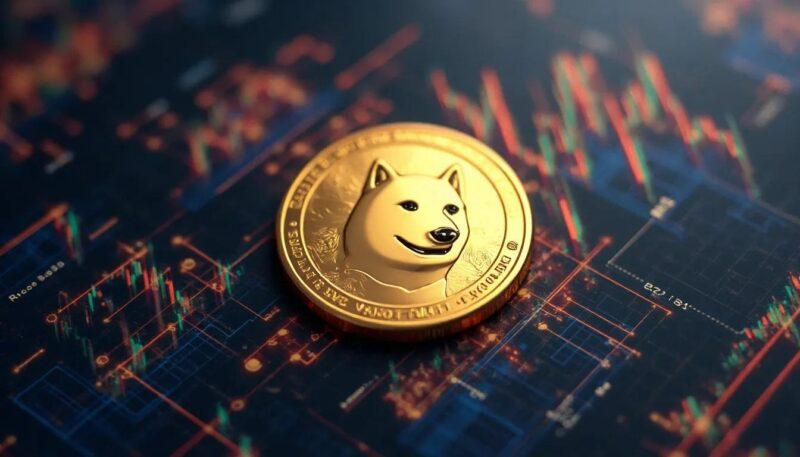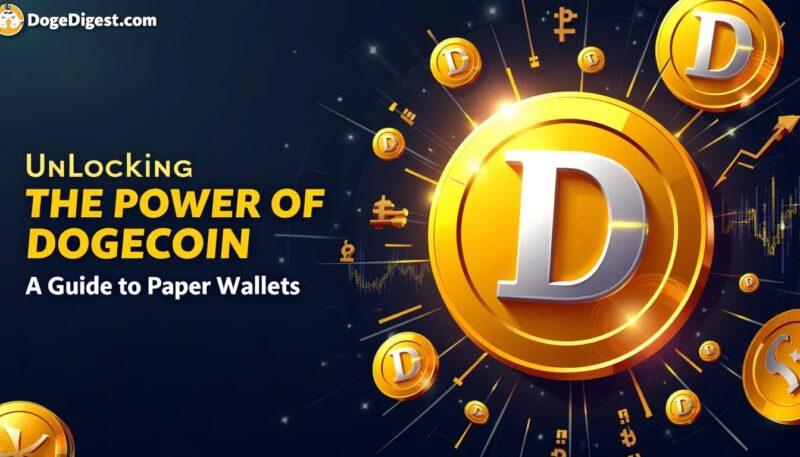In the ever-evolving world of cryptocurrency, security remains paramount-especially for Dogecoin holders navigating the playful yet unpredictable digital landscape. While the convenience of single-key wallets has long been embraced, the rising sophistication of cyber threats calls for stronger safeguards. Enter MultiSig technology: a powerful mechanism that requires multiple approvals before funds can be moved, adding layers of protection beyond the traditional approach. This article explores how MultiSig is reshaping security for Dogecoin wallets, offering users greater control, peace of mind, and resilience against unauthorized access.
Understanding MultiSig Technology and Its Role in Crypto Security
At its core, MultiSig technology revolutionizes the way cryptocurrency wallets manage access and authorization. Instead of relying on a single private key, MultiSig requires multiple keys to approve a transaction, adding an extra layer of protection against unauthorized spending or hacking attempts. This approach minimizes risks associated with lost keys or malicious insiders by distributing control across several trusted parties or devices, making it extraordinarily resilient.
Implementing MultiSig wallets in Dogecoin ecosystems delivers distinctive security benefits without compromising usability. Users can configure their wallet settings with customized approval thresholds such as 2-of-3 or 3-of-5, which means that multiple approvals are mandatory before any funds can be transferred. This setup is especially useful for organizational funds or joint accounts where collective agreement ensures transactions proceed smoothly and securely.
| Feature | Single-Signature Wallet | MultiSig Wallet |
|---|---|---|
| Security Level | Basic | Enhanced |
| Transaction Approval | Single Key | Multiple Keys |
| Protection Against Theft | Low | High |
| Ideal Use Cases | Personal wallets | Business accounts, group funds |
By implementing MultiSig wallets for Dogecoin use, individuals and teams gain control over their crypto assets with confidence and flexibility. This technology not only bolsters defense mechanisms but also creates an environment where trust is programmatically enforced rather than taken on faith alone. For anyone serious about safeguarding funds in the ever-evolving landscape of cryptocurrency, MultiSig represents a powerful ally.
Enhancing Dogecoin Wallets with MultiSig Features
Integrating MultiSig (Multi-Signature) capabilities into Dogecoin wallets transforms the way users protect their digital assets. Instead of relying on a single private key, MultiSig wallets require multiple signatures to authorize transactions, significantly reducing the risk of unauthorized access. This added layer of security is especially crucial for businesses, shared accounts, and high-value holdings where trust and transparency are paramount.
MultiSig wallets offer several practical benefits:
- Enhanced security: By requiring multiple approvals, the chance of theft or accidental loss diminishes drastically.
- Flexible control: Users can customize the number of required signatures (e.g., 2-of-3, 3-of-5) to fit their unique security policies.
- Improved collaboration: Ideal for group funds, MultiSig wallets foster collective decision-making, reducing risks of unilateral spending.
| Feature | Single-Key Wallet | MultiSig Wallet |
|---|---|---|
| Security Level | Moderate | High |
| Transaction Authorization | One signature | Multiple signatures required |
| Ideal For | Personal use | Business & group funds |
| Risk of Key Loss | Critical | Mitigated by redundancy |
Best Practices for Setting Up MultiSig Wallets to Maximize Protection
Choosing the Right Number of Signers is paramount when configuring your MultiSig wallet. While adding more signers increases security by requiring multiple approvals, overcomplicating the setup can hinder timely access. Aim for a balanced approach-typically a 2-of-3 or 3-of-5 schema-so that no single party holds too much power, but redundancy exists in case a key is lost or unavailable. This not only strengthens defense against theft but also ensures smooth transaction authorization without unnecessary delays.
Distribute Keys Securely and Strategically to avoid centralization risks. Assign signers across trusted individuals or devices in geographically diverse locations. Each private key should be stored in a way that minimizes vulnerability-consider encrypted hardware wallets, secure offline storage, or trusted custodians with clear agreements. Avoid storing multiple keys on a single device or cloud service to reduce exposure to hacks or physical loss.
Adopting a clear recovery and contingency plan is critical for maintaining uninterrupted access. Document procedures for situations like lost keys or signer unavailability, including how to rotate keys or alter signing requirements safely without compromising security. The table below highlights common MultiSig setups and their respective pros and cons to guide your decision-making process:
| Configuration | Security Level | Convenience | Ideal Use Case |
|---|---|---|---|
| 2-of-3 | High | Very Convenient | Small teams or personal wallets |
| 3-of-5 | Very High | Moderate | Medium to large groups |
| 5-of-7 | Extreme | Less Convenient | High-value, institutional wallets |
Common Challenges and How to Overcome Them in MultiSig Implementation
Implementing MultiSig wallets for Dogecoin brings a unique set of obstacles that can overwhelm even seasoned users. One of the most common issues is key management complexity. Juggling multiple private keys increases the risk of losing access if keys aren’t stored securely or are misplaced. To combat this, adopting a well-organized key storage system-such as hardware wallets combined with encrypted backups-ensures both accessibility and safety. Regularly updating access protocols and using trusted custodial services can further minimize risks.
Another hurdle lies in the coordination between multiple signers, especially when transactions require approval from several parties dispersed across locations or time zones. This can lead to delays, miscommunication, or even transaction failures if signatures are incomplete. Leveraging user-friendly MultiSig wallets equipped with notifications, clear status updates, and streamlined signing processes can bridge the gap. Establishing a protocol on how and when approvals should happen helps maintain smooth collaboration.
Lastly, many face challenges linked to platform compatibility and technical integration. Not all wallets and exchanges support MultiSig natively, creating friction when transferring or utilizing funds. Before committing to MultiSig deployment, it’s critical to research and select wallets and platforms that embrace MultiSig standards seamlessly. To illustrate this, here’s a quick comparison table outlining popular Dogecoin wallets and their MultiSig support:
| Wallet | MultiSig Support | Key Features |
|---|---|---|
| Electrum-DOGE | Yes | Customizable signatures, open-source |
| Dogecoin Core | Limited | Basic wallet, not MultiSig focused |
| BitGo | Yes | Enterprise-grade security, multisignature |
| Ledger Live | Via Hardware | Secure key storage, supports MultiSig setup |
Future Trends in MultiSig Solutions for Cryptocurrency Security
As the cryptocurrency ecosystem rapidly evolves, multi-signature (MultiSig) technology is stepping into a new era of sophistication. We can expect the integration of threshold signature schemes that allow flexible key sharing without revealing individual keys. This innovation will enable more dynamic control structures within wallets, empowering users with customizable security policies tailored to everything from casual use to institutional custody.
Moreover, interoperability across different blockchain networks is on the horizon. Future MultiSig solutions will likely support seamless cross-chain approvals, making it easier to manage assets like Dogecoin alongside other cryptocurrencies in a unified interface. Features such as secure hardware module integration and biometric verification will enhance security layers without sacrificing user convenience, turning wallets into truly resilient fortress-like vaults.
Consider the following glimpse into emerging features and their potential impact on wallet security:
| Trend | Key Benefit | Impact on Dogecoin Wallets |
|---|---|---|
| Threshold Signatures | Improved key confidentiality | Enhanced flexibility in transaction approval |
| Cross-Chain MultiSig | Unified asset control | Simplified multi-asset management |
| Hardware & Biometric Integration | Strong physical & identity verification | Reduced risk of unauthorized access |
- AI-powered anomaly detection to flag suspicious transaction patterns.
- Decentralized key recovery mechanisms to prevent permanent loss of access.
- Smart contract automation enabling conditional and scheduled fund releases.
Q&A
Q&A: The Power of MultiSig – Improving Security for Dogecoin Wallets
Q1: What is MultiSig and why is it important for Dogecoin wallets?
A: MultiSig, short for “multi-signature,” is a security feature that requires multiple private keys to authorize a single cryptocurrency transaction. For Dogecoin wallets, this means that instead of relying on just one private key (which can be lost, stolen, or compromised), transactions need approval from several keys. This drastically reduces the risk of unauthorized spending and adds an extra layer of protection for your digital assets.
Q2: How does MultiSig work in practice?
A: Imagine your Dogecoin wallet as a digital safe with several locks. Each lock corresponds to a separate private key. When you initiate a transaction, a predefined number of these locks (keys) must be ‘unlocked’ before the coins can be moved. For example, a “2-of-3” MultiSig wallet requires any two of the three key holders to sign off on a transaction, balancing security with flexibility.
Q3: Can MultiSig prevent theft and hacking?
A: While no system is 100% foolproof, MultiSig significantly lowers the chances of theft. Even if one private key is compromised, a hacker can’t access the Dogecoin without the other required keys. This makes it much harder for cybercriminals to drain wallets, protecting both individual users and organizations holding Dogecoin.
Q4: Are there any trade-offs or challenges when using MultiSig wallets?
A: Yes, MultiSig introduces some complexity. Managing multiple keys means you must ensure all key holders are reliable and can coordinate approvals. Losing one key might lock you out unless recovery protocols are set. Additionally, not all wallets or exchanges support MultiSig, so compatibility can be a consideration.
Q5: Is MultiSig suitable for everyday Dogecoin users or just for big holders?
A: MultiSig is valuable for anyone serious about security, whether you hold a small stash or large amounts of Dogecoin. It’s especially popular among businesses, joint accounts, and investment groups who want shared control and protection. However, casual users might find the extra steps cumbersome unless they’re comfortable managing multiple keys.
Q6: How can one set up a MultiSig Dogecoin wallet?
A: Setting up a MultiSig wallet usually involves choosing a wallet provider that supports this feature, such as Electrum-DOGE or certain hardware wallets. You’ll then generate multiple private keys – often stored separately – and define the signing rules. It’s advisable to carefully follow tutorials and back up keys securely to avoid losing access.
Q7: Does MultiSig affect transaction speed or cost?
A: Transactions from MultiSig wallets can be slightly slower because multiple signatures need to be collected. As for cost, the transaction fees on the Dogecoin network remain generally low, but more complex scripts like MultiSig might incur slightly higher fees. Still, these trade-offs are typically worth the enhanced security benefits.
Q8: What does the future hold for MultiSig in the Dogecoin community?
A: As Dogecoin matures and gains more adoption, the demand for robust security like MultiSig will grow. We can expect better wallet integrations, user-friendly interfaces, and possibly even layer-two solutions making MultiSig more accessible. Ultimately, MultiSig represents a step toward safer and more trustworthy management of Dogecoin’s growing ecosystem.
By embracing the power of MultiSig, Dogecoin users can turn their wallets into fortified vaults, securing their digital treasures with teamwork and technology. In a world where cyber threats loom large, MultiSig stands as a guardian – not just of coins, but of confidence.
Insights and Conclusions
As the digital landscape continues to evolve, the quest for robust security measures remains paramount-especially in the world of cryptocurrencies like Dogecoin. Multi-signature wallets offer a compelling solution, blending convenience with enhanced protection to keep your assets safe from unauthorized access. By requiring multiple approvals for transactions, MultiSig empowers users with greater control and peace of mind in an increasingly complex ecosystem. Whether you’re a casual investor or a seasoned enthusiast, embracing MultiSig technology might just be the key to unlocking a more secure future for your Dogecoin holdings.






